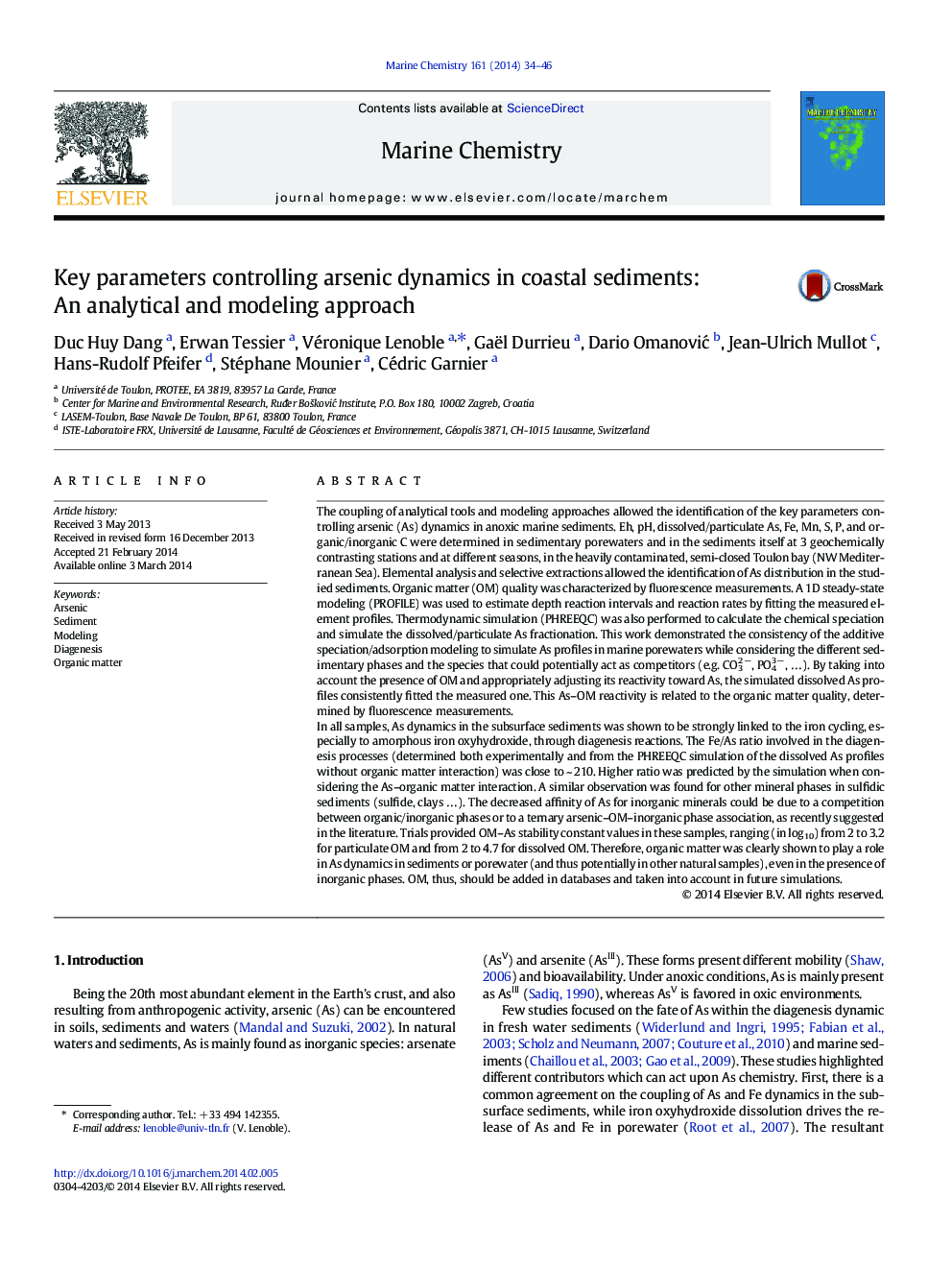| Article ID | Journal | Published Year | Pages | File Type |
|---|---|---|---|---|
| 7699560 | Marine Chemistry | 2014 | 13 Pages |
Abstract
In all samples, As dynamics in the subsurface sediments was shown to be strongly linked to the iron cycling, especially to amorphous iron oxyhydroxide, through diagenesis reactions. The Fe/As ratio involved in the diagenesis processes (determined both experimentally and from the PHREEQC simulation of the dissolved As profiles without organic matter interaction) was close to ~ 210. Higher ratio was predicted by the simulation when considering the As-organic matter interaction. A similar observation was found for other mineral phases in sulfidic sediments (sulfide, clays â¦). The decreased affinity of As for inorganic minerals could be due to a competition between organic/inorganic phases or to a ternary arsenic-OM-inorganic phase association, as recently suggested in the literature. Trials provided OM-As stability constant values in these samples, ranging (in log10) from 2 to 3.2 for particulate OM and from 2 to 4.7 for dissolved OM. Therefore, organic matter was clearly shown to play a role in As dynamics in sediments or porewater (and thus potentially in other natural samples), even in the presence of inorganic phases. OM, thus, should be added in databases and taken into account in future simulations.
Related Topics
Physical Sciences and Engineering
Chemistry
Chemistry (General)
Authors
Duc Huy Dang, Erwan Tessier, Véronique Lenoble, Gaël Durrieu, Dario OmanoviÄ, Jean-Ulrich Mullot, Hans-Rudolf Pfeifer, Stéphane Mounier, Cédric Garnier,
